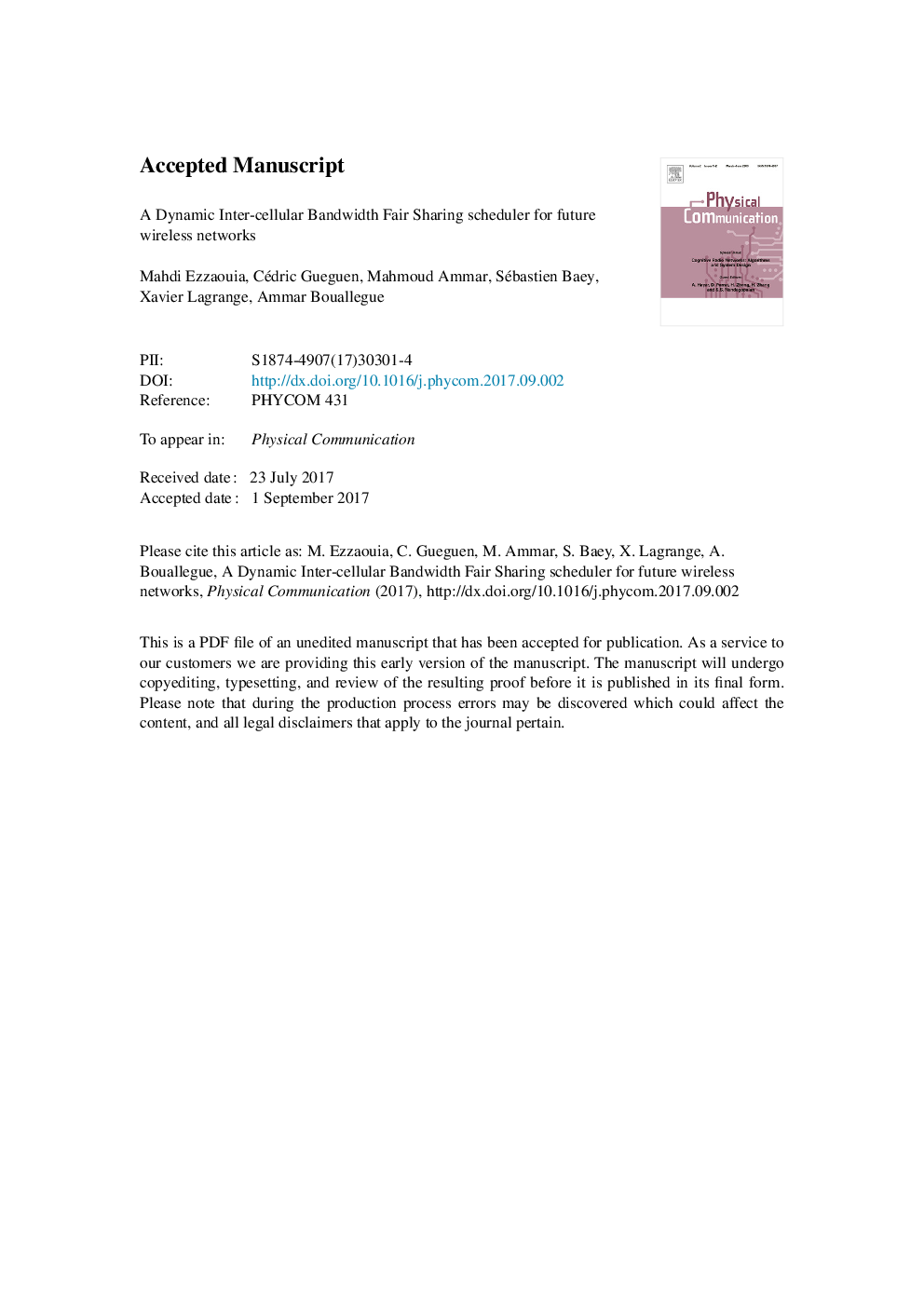| کد مقاله | کد نشریه | سال انتشار | مقاله انگلیسی | نسخه تمام متن |
|---|---|---|---|---|
| 4957588 | 1445111 | 2017 | 28 صفحه PDF | دانلود رایگان |
عنوان انگلیسی مقاله ISI
A Dynamic Inter-cellular Bandwidth Fair Sharing scheduler for future wireless networks
ترجمه فارسی عنوان
پهنای باند پویا پهنای باند نمایشگر به اشتراک گذاری زمانبندی برای شبکه های بی سیم آینده
دانلود مقاله + سفارش ترجمه
دانلود مقاله ISI انگلیسی
رایگان برای ایرانیان
کلمات کلیدی
شبکه های بی سیم، طرح تخصیص کانال، تعادل بار، برنامه ریزی، کیفیت خدمات،
موضوعات مرتبط
مهندسی و علوم پایه
مهندسی کامپیوتر
شبکه های کامپیوتری و ارتباطات
چکیده انگلیسی
Due the limitation of the frequency spectrum, channel assignment remains a main challenge in future wireless networks. In this context, the Inter-cellular Scheduling Scheme consists in dynamically allocating/reallocating the bandwidth to the cells, adapting it to the inhomogeneous traffic distribution that appears in a multi-cell environment. More precisely, it dynamically selects the cell that experiences the highest difficulties and grants it supplementary radio resources borrowed from its neighboring under-loaded donor ones. In this paper, we introduce and explain the concept of minimal bandwidth, which corresponds to the minimal amount of radio resources that an under-loaded cell must keep in order to be protected from sudden and uneven high bit rates peaks. This minimal bandwidth guarantees a minimal service. The majority of the existing works on dynamic channel assignment neglects the use of this important parameter or consider it as a static one. In this context, we introduce a novel multicellular scheduler called Dynamic Inter-cellular Bandwidth Fair Sharing that dynamically computes the minimal bandwidth of a cell according to its ratio of used bandwidth and available bandwidth. In the first step, the proposed solution is applied to the channel assignment scheme Reuse 3 and compared to a state of the art inter-cellular scheduling strategy in order to underline the benefits of the dynamic minimal bandwidth adaptation. In the second step, we have applied our methodology to the Fractional Frequency Reuse (FFR) scheme and compared it to the four frequency allocation schemes, Reuse 1, Reuse 3, FFR and Soft Frequency Reuse (SFR), as well as to a reference Dynamic FFR (D-FFR) solution that does not take into consideration the needs of the cells in terms of minimal bandwidth while redistributing the radio resources. Simulation results show that although the D-FFR scheme enhances the performances of the overloaded cell, it deteriorates the performance of the neighboring under-loaded ones. On the contrary, our solution called FFRDIBFS improves the provided Quality of Service (QoS) of both the congested cells and the whole cellular network.
ناشر
Database: Elsevier - ScienceDirect (ساینس دایرکت)
Journal: Physical Communication - Volume 25, Part 1, December 2017, Pages 85-99
Journal: Physical Communication - Volume 25, Part 1, December 2017, Pages 85-99
نویسندگان
Mahdi Ezzaouia, Cédric Gueguen, Mahmoud Ammar, Sébastien Baey, Xavier Lagrange, Ammar Bouallègue,
